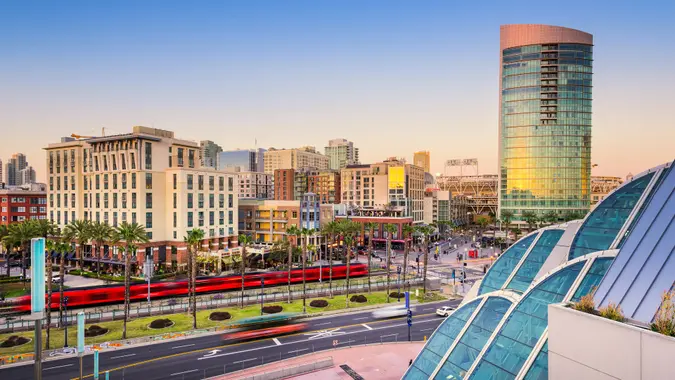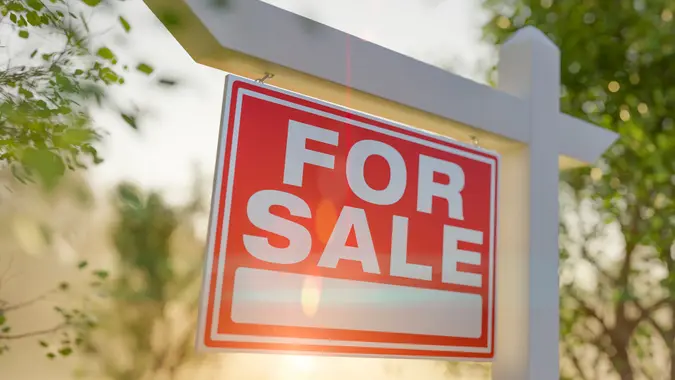I’m a Real Estate Expert: My Predictions for the Hottest Housing Markets in the Midwest for 2026

Commitment to Our Readers
GOBankingRates' editorial team is committed to bringing you unbiased reviews and information. We use data-driven methodologies to evaluate financial products and services - our reviews and ratings are not influenced by advertisers. You can read more about our editorial guidelines and our products and services review methodology.

20 Years
Helping You Live Richer

Reviewed
by Experts

Trusted by
Millions of Readers
If you’re looking to invest in or buy a new home in an area poised for growth in 2026, you may want to set your sights on the Midwest.
With its mix of thriving industries, affordable housing, expanding amenities and growing populations, the middle of the country offers a wide range of opportunities for buyers and investors. Several metros are already attracting attention thanks to job growth, strong price-to-income ratios and large pipelines of new construction.
Metros With Diversified Employers
The metros most likely to appeal in 2026 are those with diversified employers, favorable housing affordability and steady housing development, according to Jacob Naig, real estate investor, agent and owner at We Buy Houses in Des Moines. These cities combine job stability with affordability, making them especially attractive to buyers priced out of coastal markets.
Examples include:
- Des Moines, Iowa: Insurance, finance, data centers
- Kansas City, Missouri: Logistics, advanced manufacturing
- Columbus, Ohio: Semiconductors, tech-adjacent services
- Madison, Wisconsin: Healthcare, university R&D
- Omaha, Nebraska: Finance, defense/tech
- Grand Rapids, Michigan: Medical, design and light manufacturing
- Indianapolis: Biotech, logistics
Under the Radar Markets
Naig also pointed to “under the radar” markets such as smaller university towns and spillover suburbs where land is available for development. These areas often feature job incentives, shorter commutes and fresh housing stock.
Examples:
- Ames, Iowa
- Waukee-Grimes-Bondurant, Iowa
- Cedar Rapids-Marion, Iowa
- Council Bluffs/Carter Lake, Nebraska
- Fort Wayne, Indiana
Cities Attracting Millennials and Gen Z
Young professionals and families like Gen Z and millennials are likely to be drawn to “inner ring suburbs with new townhomes and strong schools … in small, amenity-rich urban neighborhoods,” Naig said. These areas balance affordability with lifestyle appeal.
Examples:
- East Village and Gray’s Landing, Iowa
- Ankeny and Waukee, Wisconsin
- Columbus, Ohio
- Kansas City, Missouri
Areas With Long-Term Value
Markets with “long-term value” are those with strong job markets, modern housing and steady appreciation. These metros also have the benefit of diverse employers that provide resilience in economic downturns.
Examples:
- Des Moines, Iowa (Norwalk, Waukee, Bondurant)
- Omaha, Nebraska (Elkhorn, Papillion)
- Madison, Wisconsin (Fitchburg, Sun Prairie)
- Columbus, Ohio (Hilliard, New Albany)
- Grand Rapids, Michigan (Kentwood, Wyoming)
Best Mix of Affordability and Future Growth
For buyers who want both investment potential and livability, Naig recommended looking to metros with ongoing new construction, opportunities for duplex or house-hacking strategies and steady infill development.
Examples:
- Des Moines, Iowa
- Omaha, Nebraska
- Grand Rapids, Michigan
- Fort Wayne, Indiana
- Cedar Rapids, Iowa
Whether you’re an investor looking for long-term value or a homebuyer seeking affordability and lifestyle perks, the Midwest offers some of the hottest housing markets to watch in 2026. With steady job growth and expanding development, these metros could be prime opportunities for those ready to make a move.
 Written by
Written by  Edited by
Edited by 

























